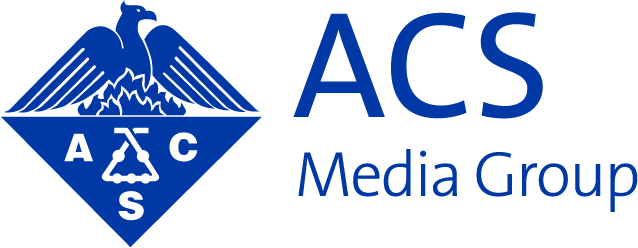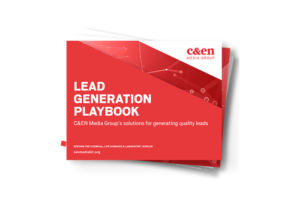When many companies decide to create white papers, they do it as part of a one-off strategy. The white paper gets the green light because it will be useful as part of a campaign to promote a specific product or service, but it will effectively disappear once that initial campaign has ended.
Instead of investing valuable resources to produce one-off content that never gets reused, consider implementing a system that allows you to create and repurpose white papers with evergreen value.
Planning a white paper strategy in advance allows you to distribute this content through conventional channels while also driving web traffic and collecting leads on your website.
But creating a strategy that’s effective requires identifying compelling and valuable topics, using the best distribution channels and finding creative ways to repurpose content. Here at C&EN, we often work with clients to take a “single” piece of content, – usually a larger component like a webinar or white paper – and create social media campaigns, quizzes, infographics and so on. Our favorite mantra “Create once, publish everywhere” includes a strong repurposing strategy. Here are the elements to consider to build one too:
Identifying Compelling White Paper Topics
It’s entirely too tempting to create a white paper about the features and benefits of your company’s product. It doesn’t mean don’t do it, but this type of content is better suited to a brochure and used by your sales team to help close a deal.
What do you talk about then? When developing a white paper strategy, you need to be sure that your content will be compelling to your audience—even if they aren’t close to the point of sale. White papers can provide enormous value; yours need to be valuable enough to justify asking people for their time and information.
Creating that value is a matter of understanding your intended audience and leveraging industry knowledge, both inside and outside your own organization.
To brainstorm, tap into your buyer personas.
Who are you speaking to, and what do they care about? Whether you acquire this knowledge through customer interaction or market research, understanding your audience’s core problems is the key to creating value.
Sales teams are often an excellent resource. Because they engage directly with customers and prospects, they are likely to have a sense of which problems are the most frequent and important.
Once you know your audience’s pain points, you can use your industry knowledge to address them in a white paper. Of course you likely developed your product specifically to address certain pain points, and it’s fine to mention your product as a potential solution. But to gain the audience’s trust, present a comprehensive overview of the situation alongside the pros and cons of several solutions, not just your own. Again, remember that a white paper should never be about your product specifically.
You can also leverage your industry knowledge to produce white papers about exciting topics that will affect your audience, such as:
• The latest scientific developments
• Recent trends, even outside your industry, your audience should be paying attention to
• New research or success stories you can highlight
• An opinion or expert position
However you decide to develop topic ideas, make sure you can answer the question “why should people read this” with something other than “to learn more about our products.”
Distributing White Papers
Once your white paper is produced, where will it live? How will people find it? You can have the most compelling white paper in the world, but you still need to make an effort to promote your work.
Hosting white papers on your website is a straightforward and popular approach, but distribution is not quite as simple as clicking “publish.”
If visitors need to click through six pages and download an ambiguously titled PDF, you’re unlikely to get much traction. Prominent navigation and calls-to-action are critical to guide users to your content.
Second, should you require an email address and additional information, or simply post content for all to see? There are pros and cons to each approach.
To Gate or Not to Gate?
When you gate white papers, you require visitors to provide their email address, and possibly other information, before granting access to your content.
Gated content can be extremely effective because it allows you to directly collect audience information. Not only do you open a line of communication to your audience through email, you have the opportunity to gather information about the companies and positions of your readers.
When gating content, it’s important that you display value propositions prominently. Readers need to view your content as valuable enough to justify giving you their email address. Including a compelling title and summary along with webpages optimized for conversions is important.
Of course, gating content can also limit your content’s availability. If your goals are centered on thought leadership, it’s often beneficial to allow broader access to your material. You won’t lose the people who prefer not to give away their contact details.
Content housed in PDFs also cannot be indexed by search engines. Long, in-depth content characteristic of white papers often performs well in search, so it may be in your best interest to allow open access. If you choose not to gate your content, you can still request email addresses. A simple subscription box can promote access to more related content.
A middle ground is allowing free access to your content after a certain period of time, but also offering a PDF to download that’s only accessible with an email address. Scientists are busy people; many will not have the time to read a white paper at the exact moment they discover it. Always offering a downloadable PDF allows you to capture email addresses, reap SEO benefits and provide additional value to your audience.
Other Distribution
There are opportunities to distribute white papers beyond hosting them on your website, of course. Here are the elements you should always consider.
In-Person Meetings and Events
In-person meetings remain a critical component of many buying cycles, and white papers can be valuable tools in these meetings. When a potential customer raises a concern, it can be powerful to produce in-depth content addressing their problems on the spot. (Even more powerful is when you can tie it to another client whose challenges you solved.)
Trade shows similarly enable companies to use physical copies of their white papers, although they tend to target earlier stages of the buyer’s journey – those who may be learning about you for the first time because of your presence at the show. But having copies of your white papers available for interested attendees, and even promoting that fact in your event-related communications, is a simple way to demonstrate thought leadership.
Digital Channel Distribution
Even if you do use your website as your primary hosting method, use other online channels to drive attention to them. Pay-per-click (PPC) ads in search, social media posts and promotions, and even banner ads can effectively ensure that your white paper receives the attention it deserves.
Partnering With a Publisher
Another valuable way to distribute your white paper would be to start by working with a publisher. Publishers add value, expertise and reach, especially if they have a large subscriber base. Many publishing houses have a robust market analysis team that can readily add depth and context, and be a crucial piece of the overall strategy of your campaign.
Developing white papers with a publisher can also add validity as they’re typically viewed as an impartial third party. It’s in a publisher’s best interest to produce content, – including when paid for by an advertiser, – that is factually accurate and adheres to editorial standards. At C&EN, we have access to survey information, business intelligence and industry news that can give your white paper an edge and added perspective.
Repurposing White Papers
White papers are an extremely in-depth, well-researched content offering. In the course of developing them, you will almost certainly have compiled enough information for several blog posts or contributed articles. As mentioned at the beginning of our post, content does not need to end with the white paper itself.
White paper content can easily be repurposed in the form of a blog post for your website to provide more points-of-entry for your audiences on a given topic. Not all will do it, but pitching publication editors to repurpose your content will spread your message and reach. These tactics are excellent ways to produce additional content without having to perform additional background research.
There are opportunities beyond written formats as well, some of which will depend on the specific content you produce. Some potential types of repurposing include:
• Infographics
• Online quizzes
• Checklists
• Sales materials
• Videos
• Podcasts
In short, white papers can be used as a tactic within a larger content and marketing strategy, or they can form the backbone of the strategy on their own. Regardless of how you use white papers, creating compelling content and maximizing its value through distribution and repurposing is crucial if you want to make sure your audience pays attention.




















